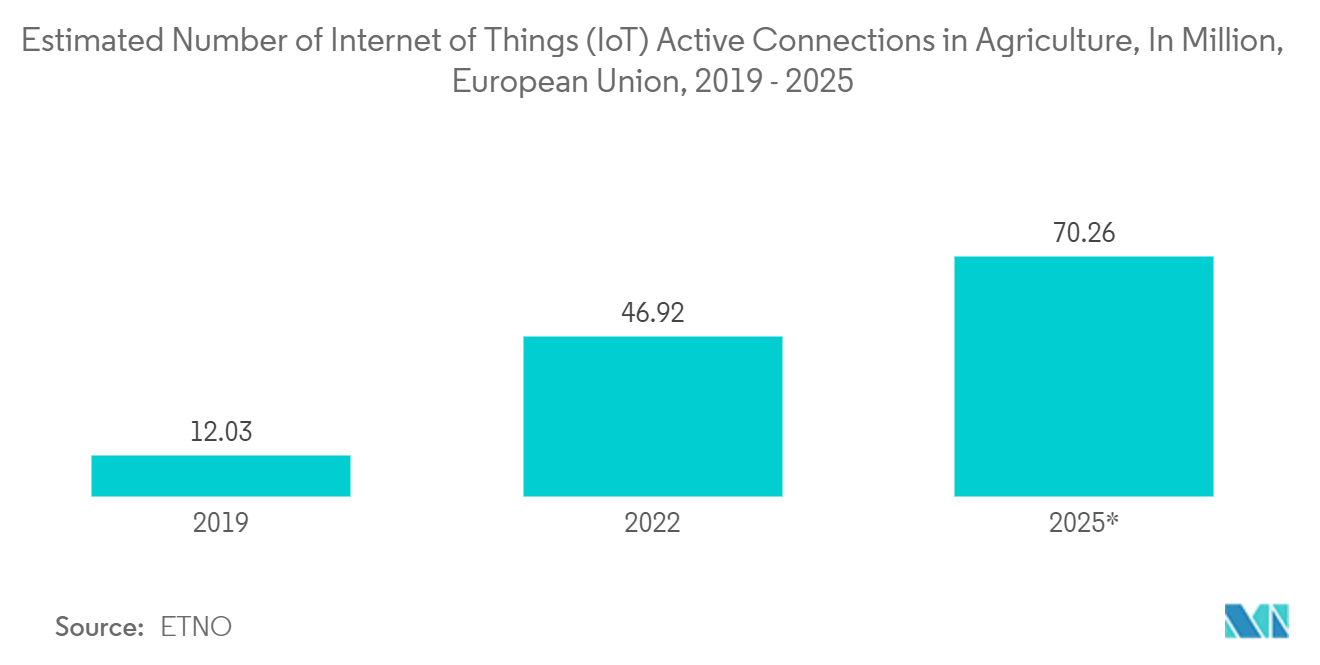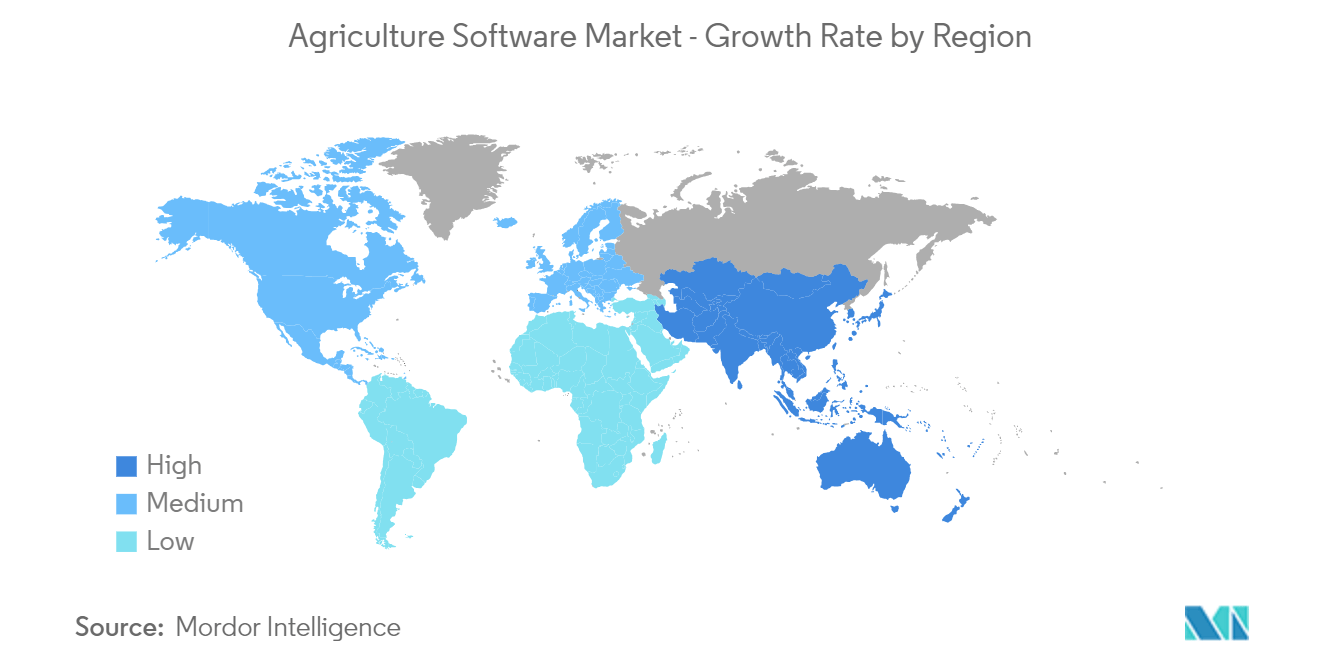Market Trends of Agriculture Software Industry
Platform as a Service (PaaS) to Witness the Market Growth
- Agriculture software in the smart greenhouse helps farmers and growers monitor and control the smart greenhouse's environmental conditions and crop growth. A smart greenhouse is a greenhouse that uses various sensors, actuators, and devices to create an optimal microclimate for plants and to automate the growing process. Agriculture software in smart greenhouses can help with multiple aspects of smart greenhouse management, such as data collection and analysis, data visualization and management, predictive modeling and planning, and monitoring and control, thereby significantly driving the market growth rate.
- Agriculture software in smart greenhouses can monitor the environmental conditions and crop growth in real-time using various sensors and devices. The software can also control the environmental conditions and crop growth by sending commands to multiple actuators and devices, such as fans, heaters, coolers, vents, shades, lights, sprinklers, pumps, valves, or robots. The software can also provide alerts and recommendations for any issues or anomalies detected in the smart greenhouse, thereby contributing to the demand across several regions.
- A system for monitoring the crop field with sensors (light, humidity, temperature, soil moisture) is constructed in IOT-based smart greenhouse farming, making the irrigation system more automated. The farmers can keep an eye on the state of the fields from any location. Compared to the standard method, smart greenhouse farming that is IOT-based is highly productive.
- For instance, in December 2022, Astrocast, a nanosatellite IoT network administrator, and Avirtech, a supplier of farmer control frameworks that screen site conditions to reduce functional expenses and increase yields, reported a smart farming partnership. Astrocast provides Avirtech with Satellite IoT (SatIoT) network answers for its BIOTA keen homestead control framework. Avirtech's Avirlink will incorporate its technology as part of this.
- Further, the growing investments in smart agriculture solutions by several governments, such as India and the United States, are analyzed to bolster the market growth rate during the forecast period.

North America to Hold Major Share in the Market
- North America is analyzed to hold the highest share of 52.46% in the previous year. The United States contributes significantly to the smart agriculture practices analyzed to bolster the market growth rate during the forecast period significantly. For instance, in May 2023, The U.S. Department of Agriculture (USDA) spent USD 8 million in four collaborations to promote and increase soil carbon measurement and monitoring on working agricultural lands and evaluate how climate-smart practices affect carbon sequestration. On regional soil organic carbon stock monitoring programs, the USDA's Natural Resources Conservation Service (NRCS) will collaborate with Iowa State University, Michigan State University, American Climate Partners, and the University of Texas at El Paso.
- Additionally, in April 2023, U.S. agricultural exports reached USD 196.4 billion in 2022, according to the data published by the U.S. Department of Agriculture, which shows the development of agricultural production in the country and creates an opportunity for agricultural software market vendors in the United States.
- The application of agriculture software in precision farming is fueling the country's market growth. It is becoming increasingly popular among farmers, who are employing information gathered by GPS, satellite images, internet-connected devices, and other technology to do farming more effectively.
- The agriculture software market in Canada is primarily driven by increasing government efforts and investments to boost precision farming coupled with the growing trend of transitioning towards sustainable practices in the country. Further, precision farming is witnessing significant adoption as farmers in the country are able to monitor and manage their operations with high precision with the help of sophisticated analytics.
- Cloud-based agriculture software is expected to witness growth in the coming years. This is primarily due to enhanced reliability through cloud-based technology solutions offered in a cloud deployment. In addition, ease of use, flexibility, and scalability are a few of the factors that may help to increase the cloud-based deployment of agriculture software in large agribusiness companies as well as small and medium farmers.
- Overall, the Canadian market for agriculture software is expected to witness substantial growth owing to increasing government initiatives towards sustainable practices and the use of technologies in the agriculture sector coupled with various ongoing and past investments by the government to accelerate precision farming in the country. In addition, easy-to-use and sophisticated agricultural software launches will further proliferate the growth of agriculture software in Canada over the forecast period.


